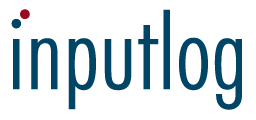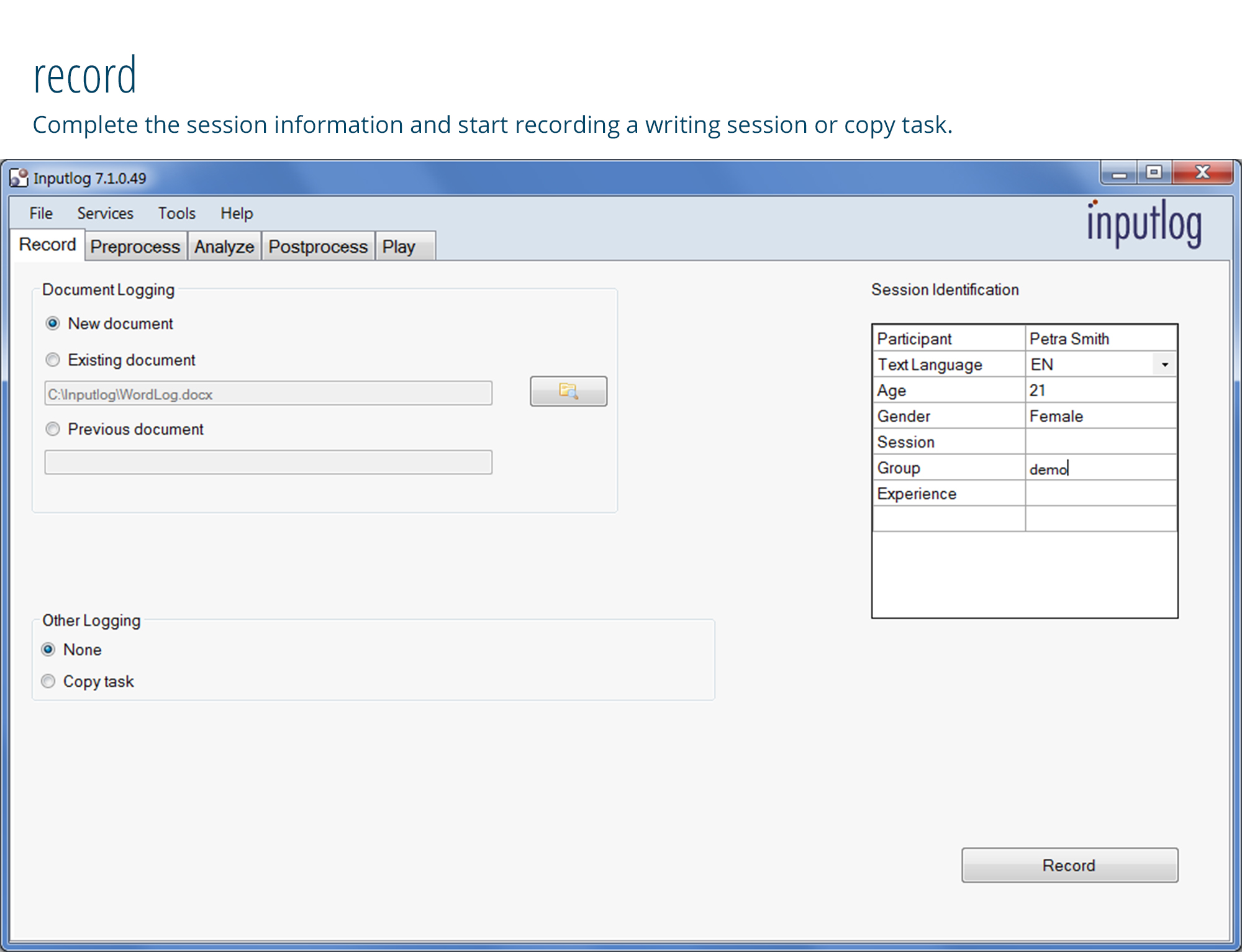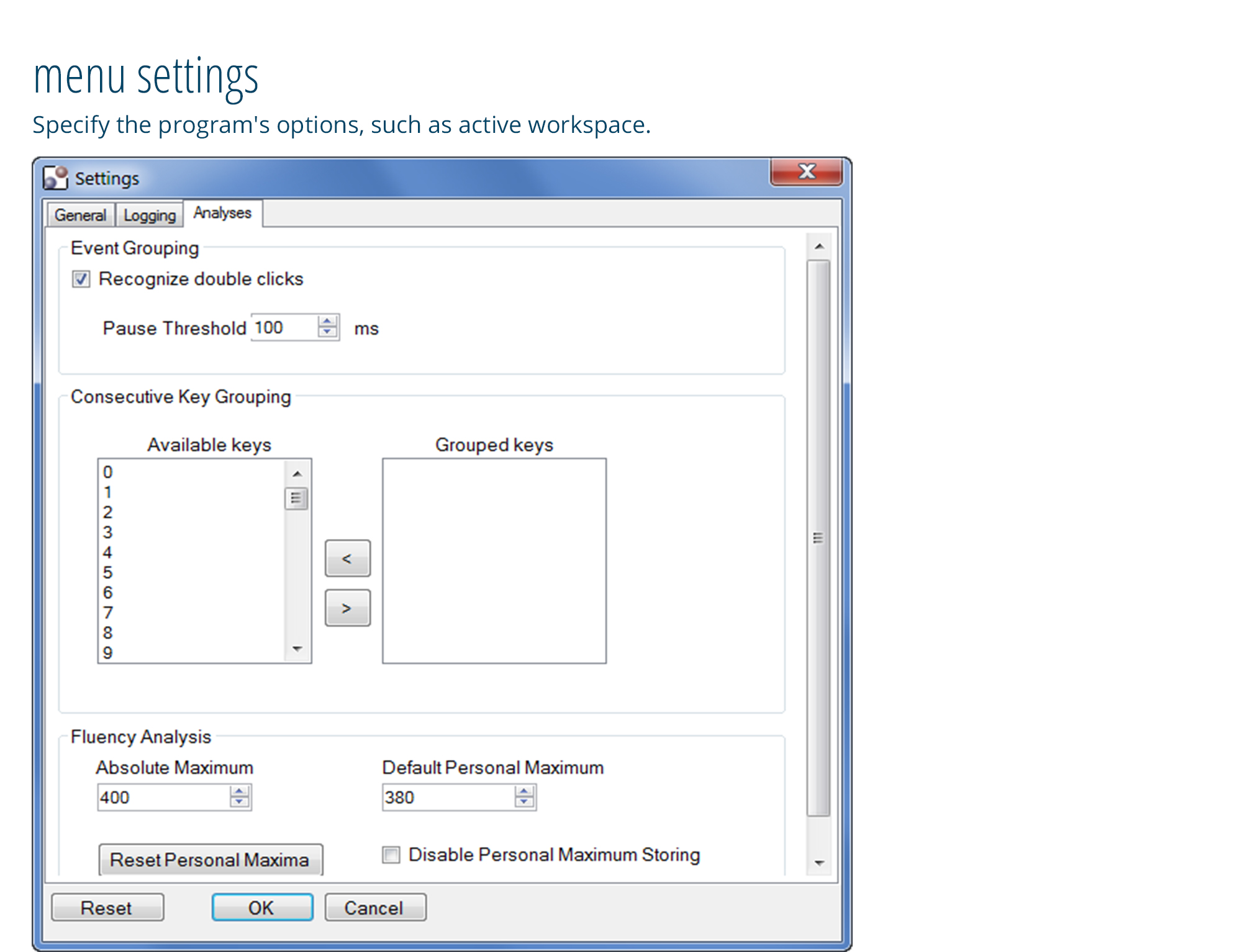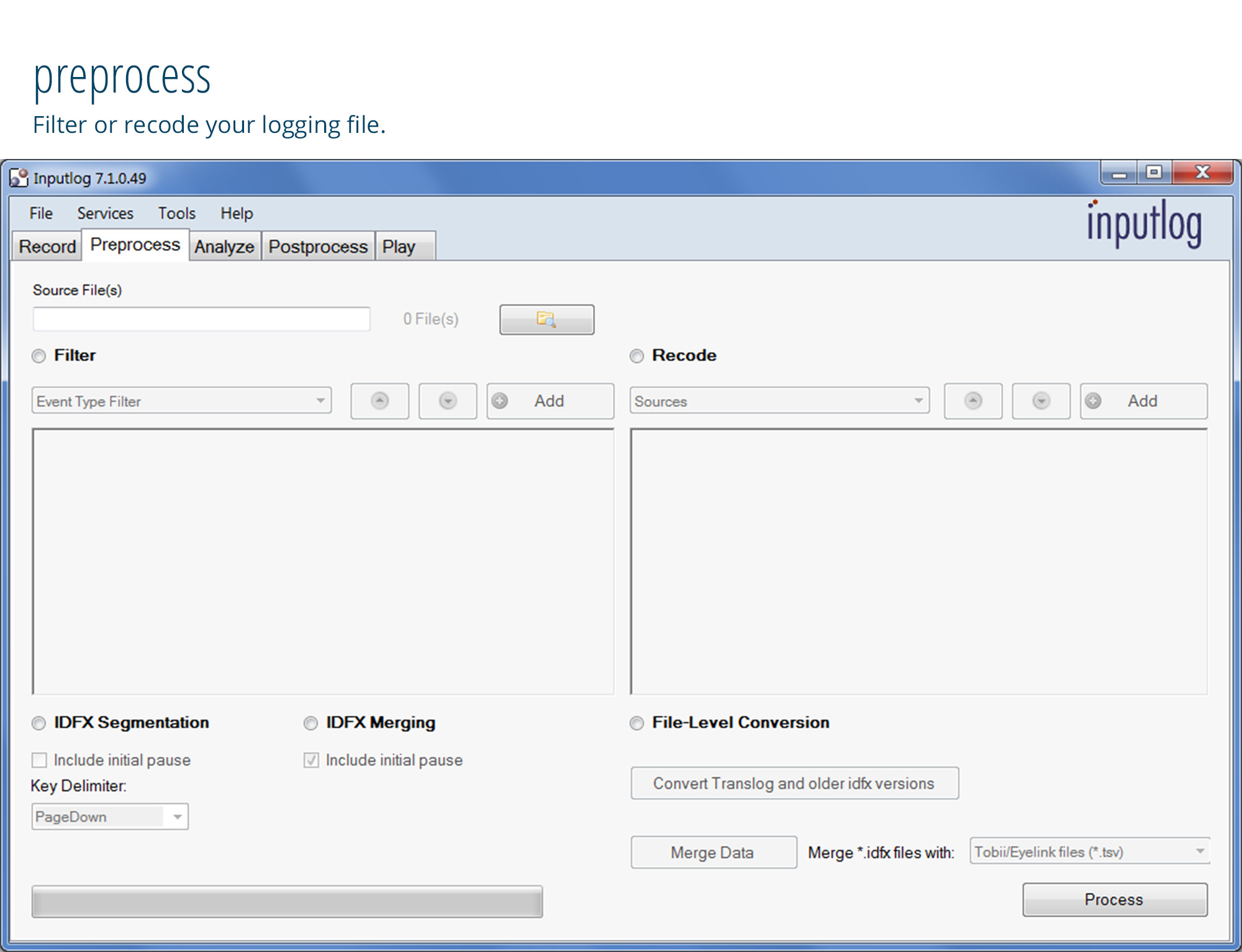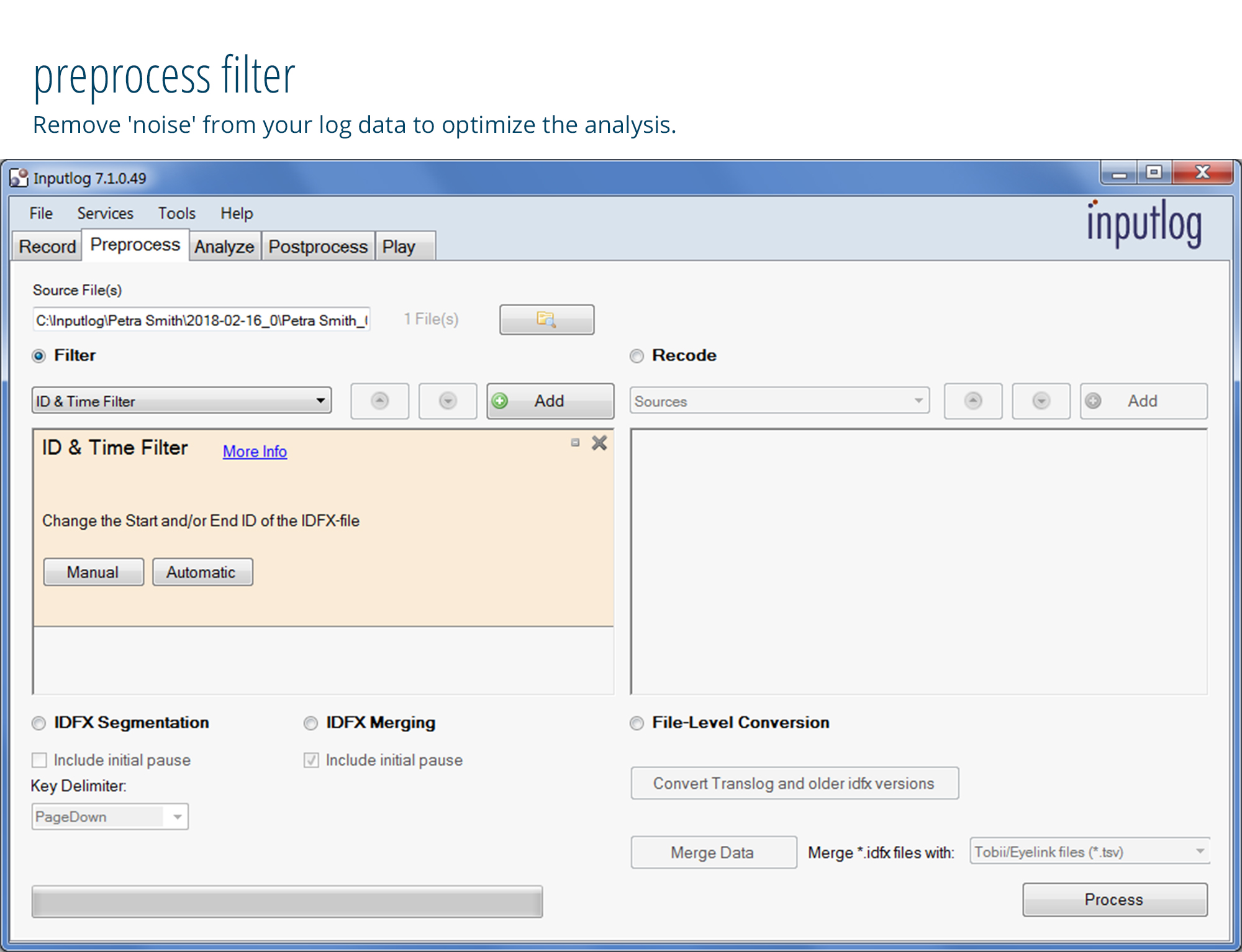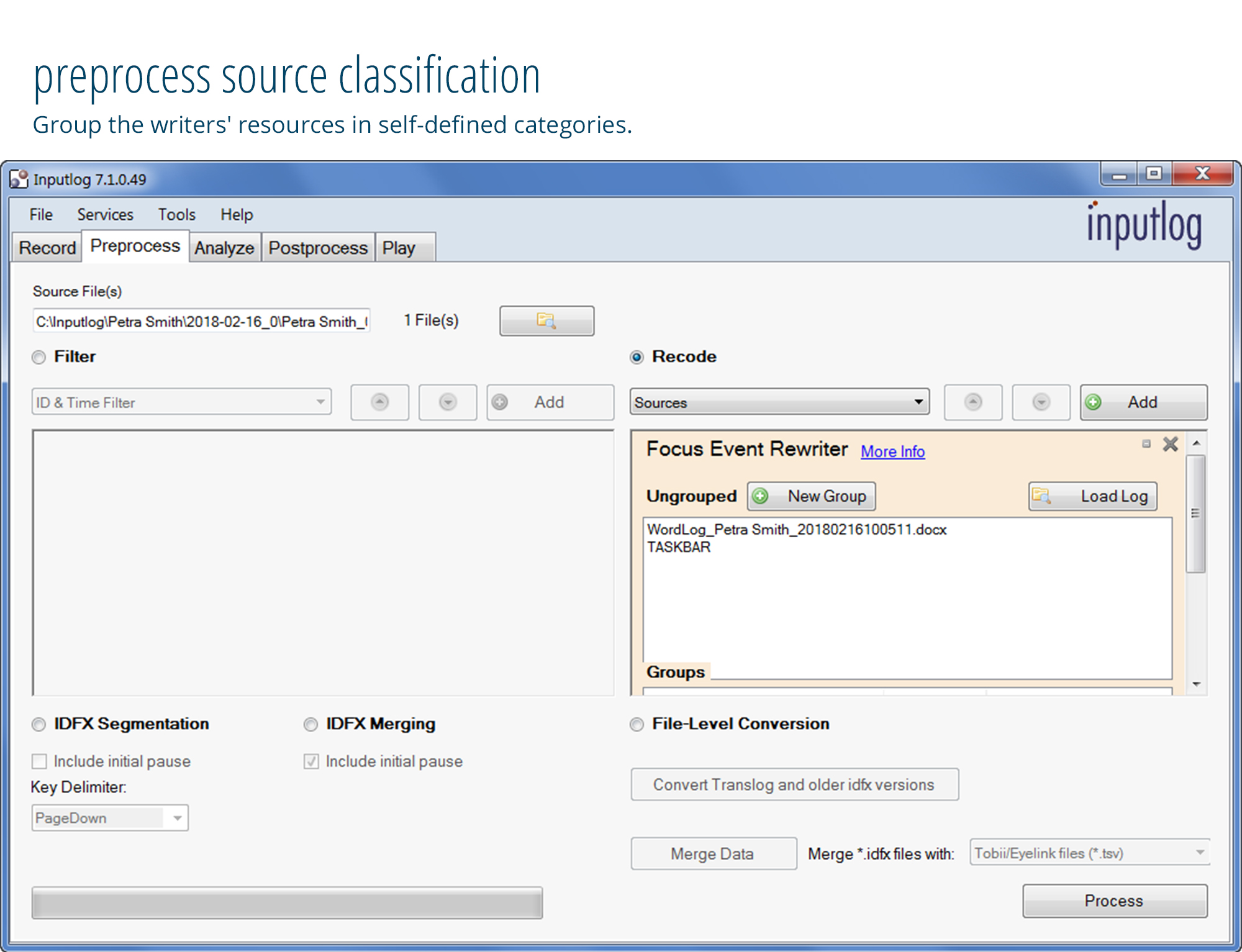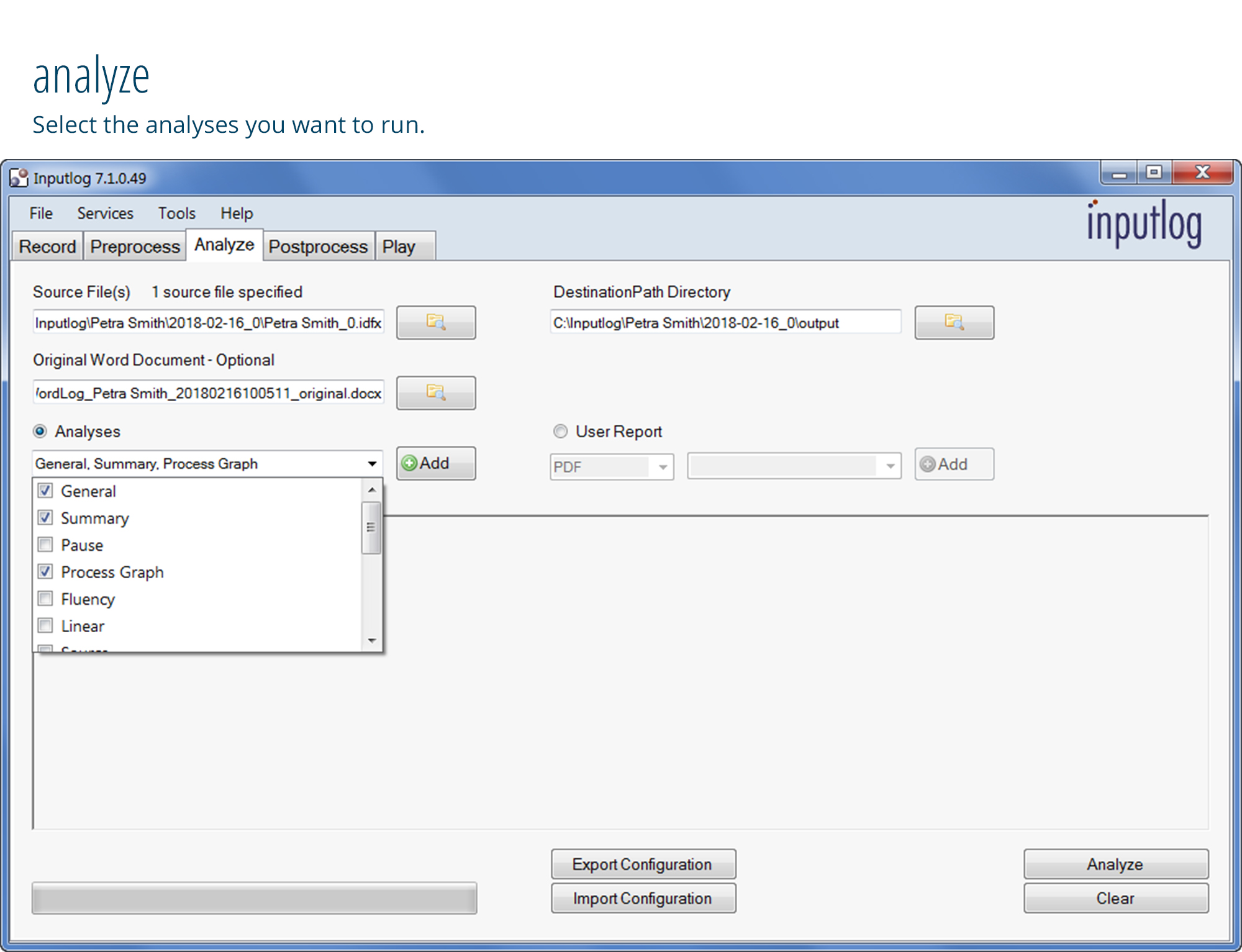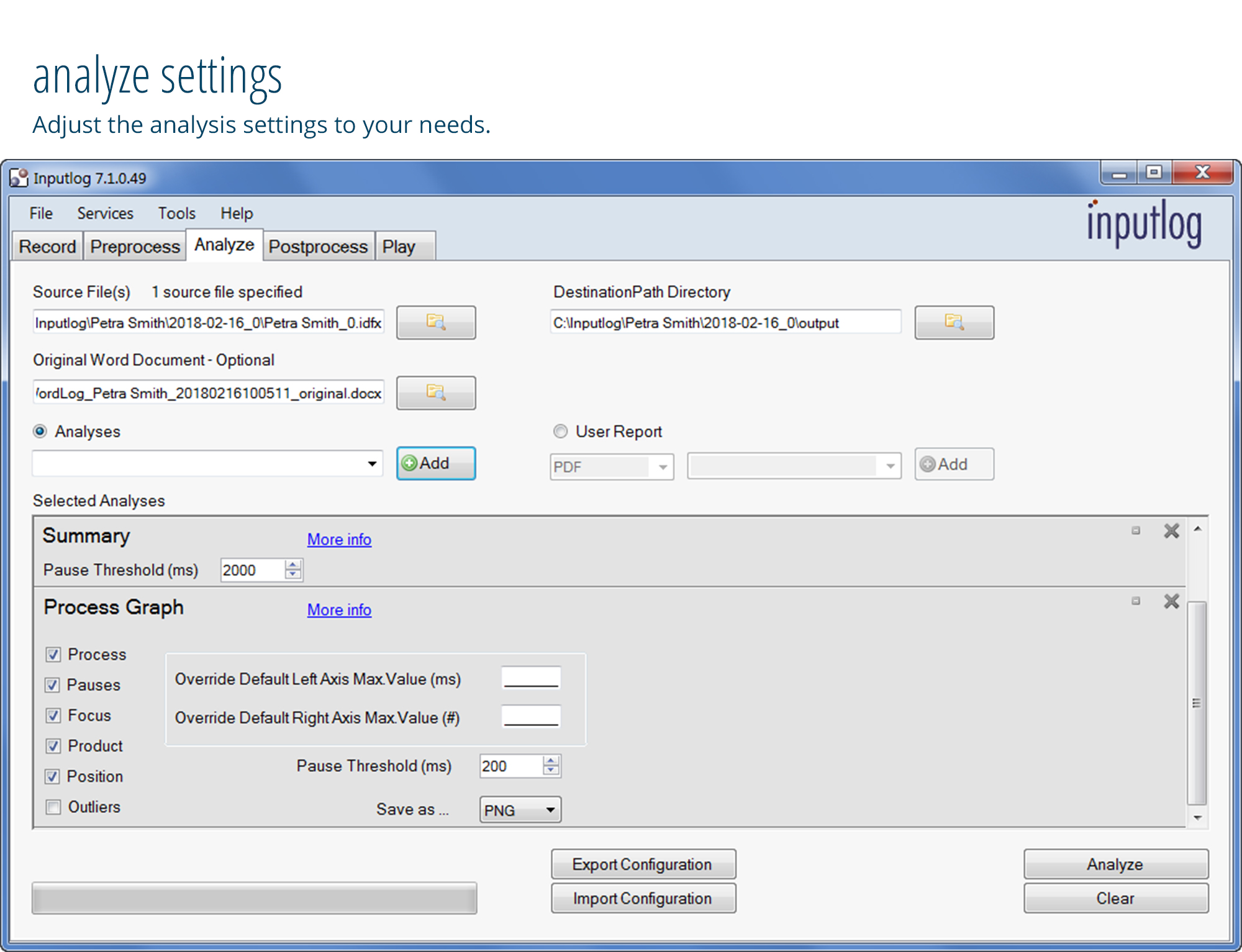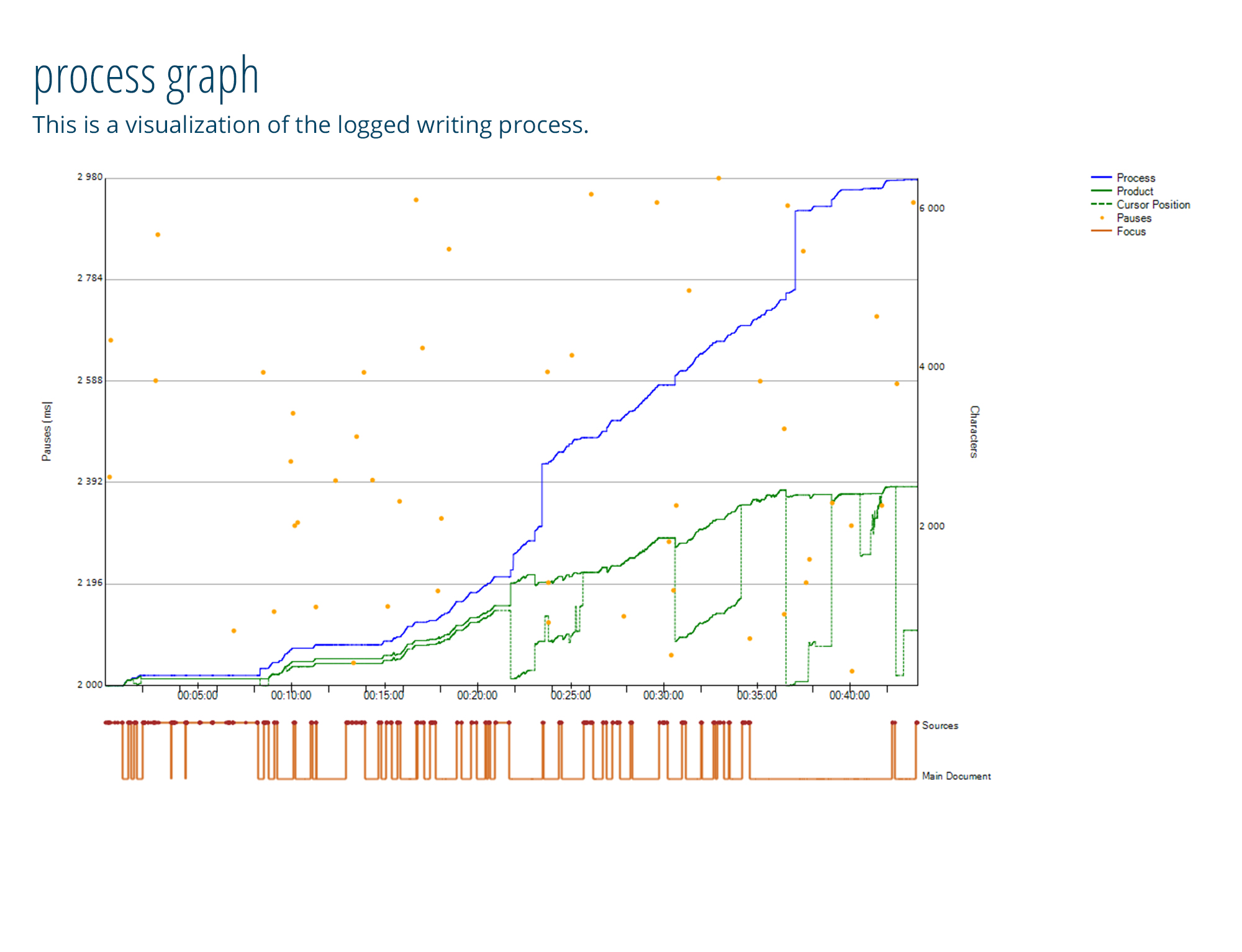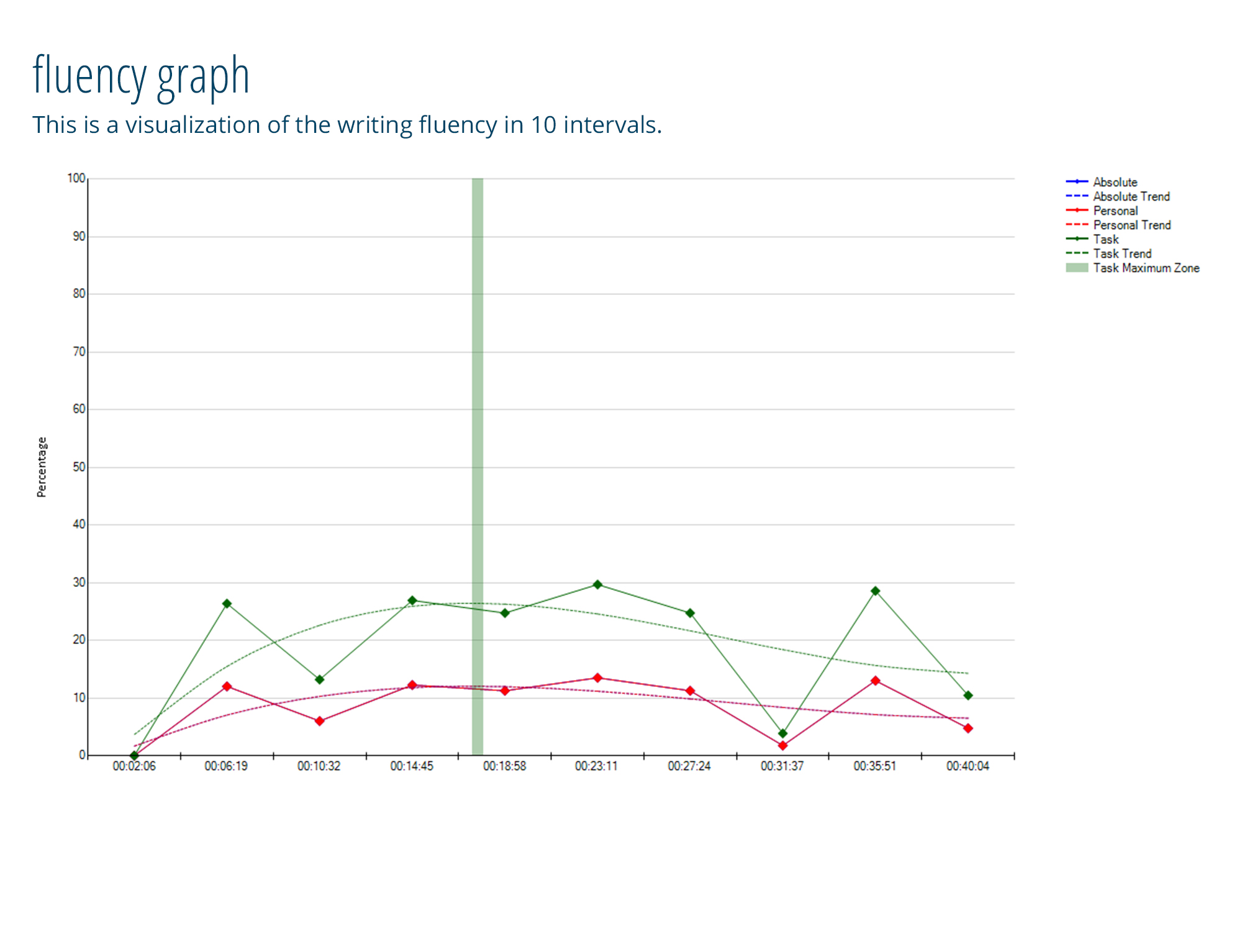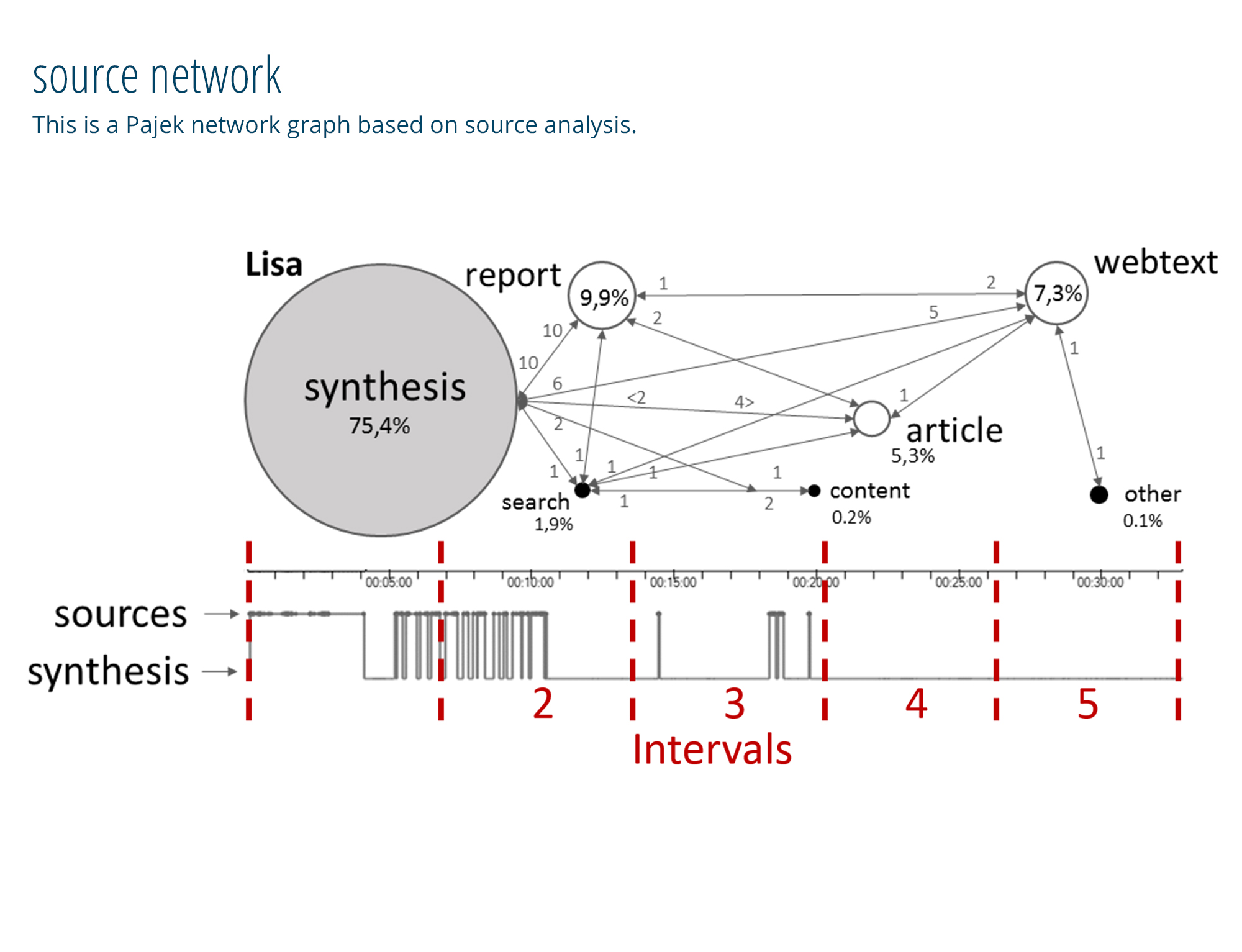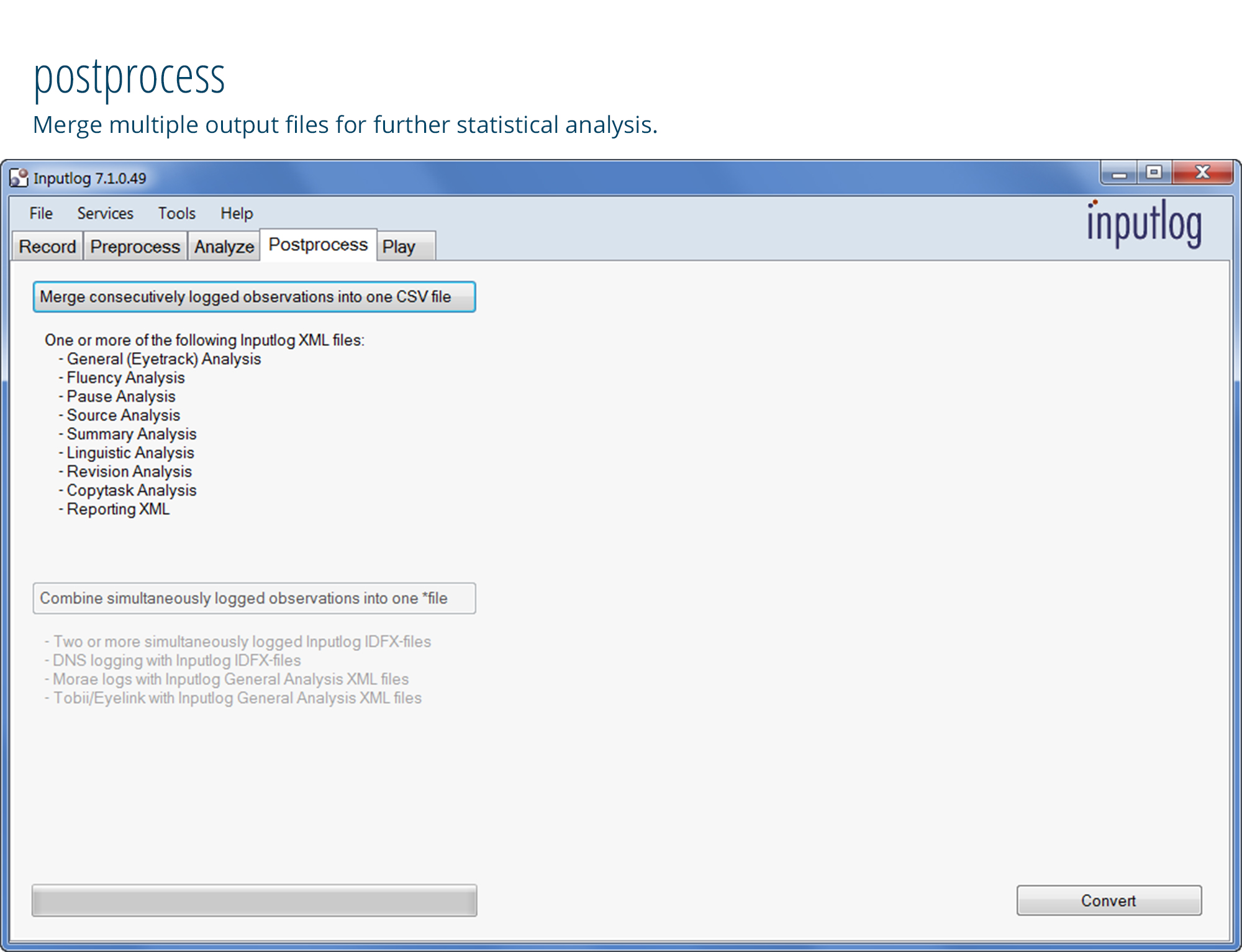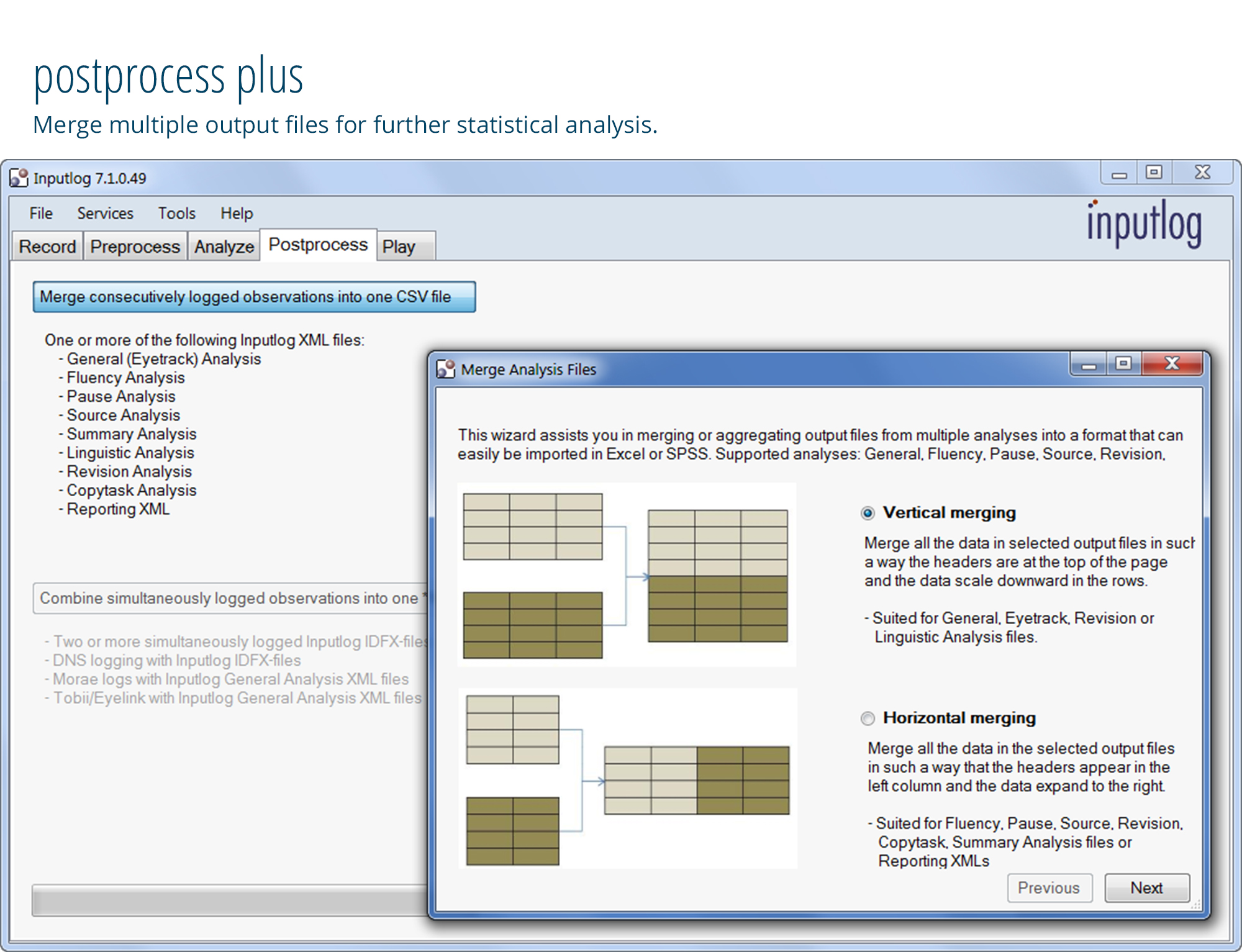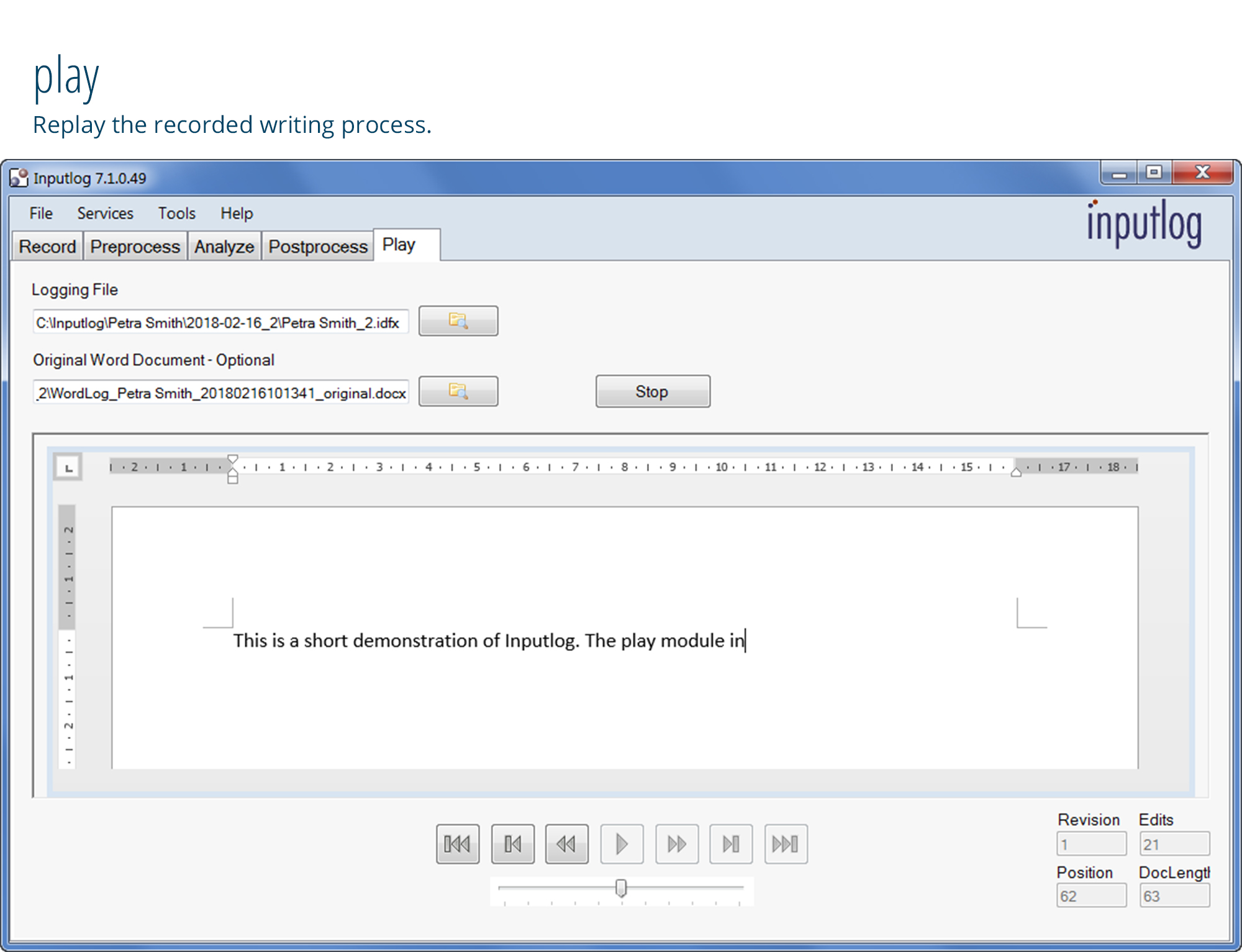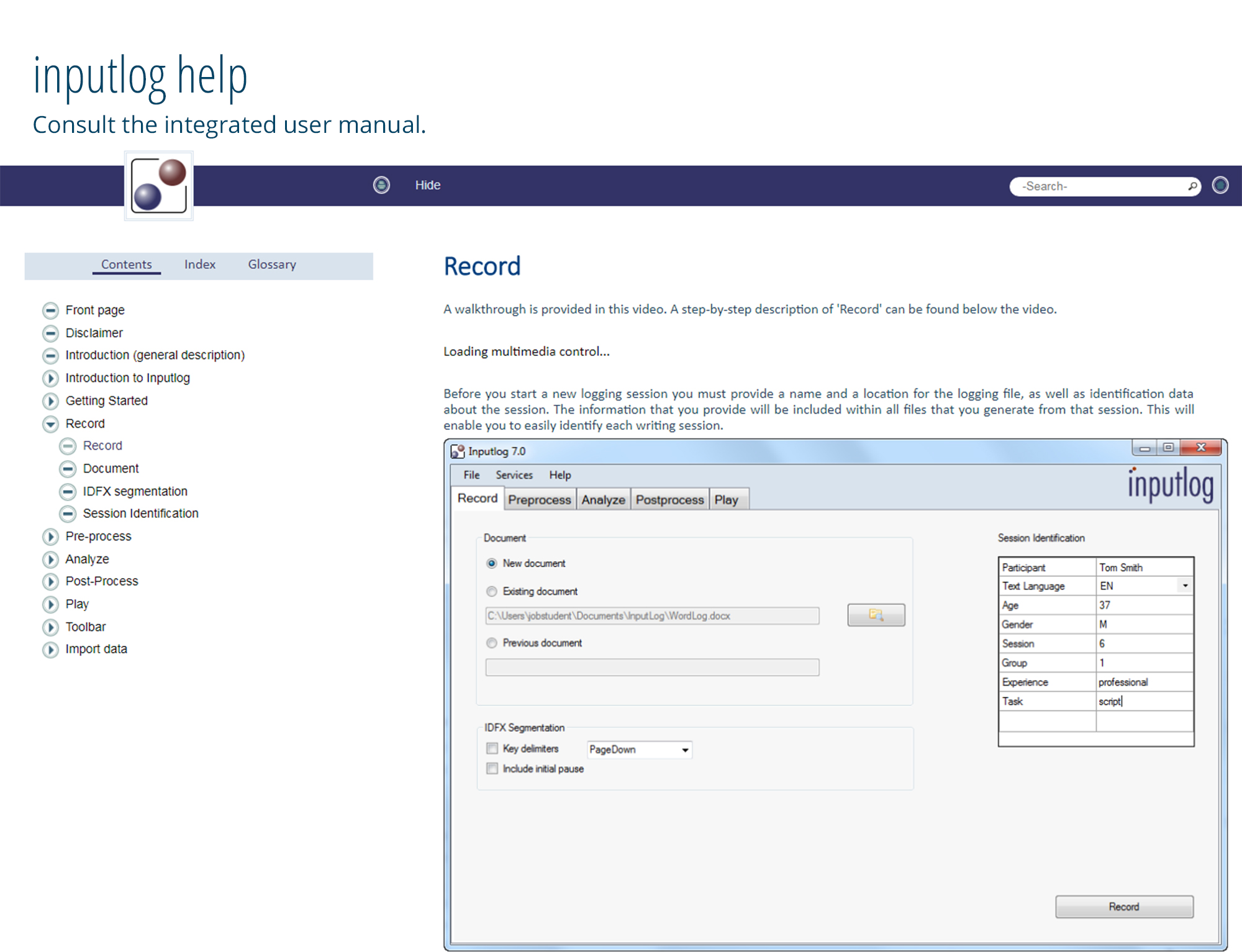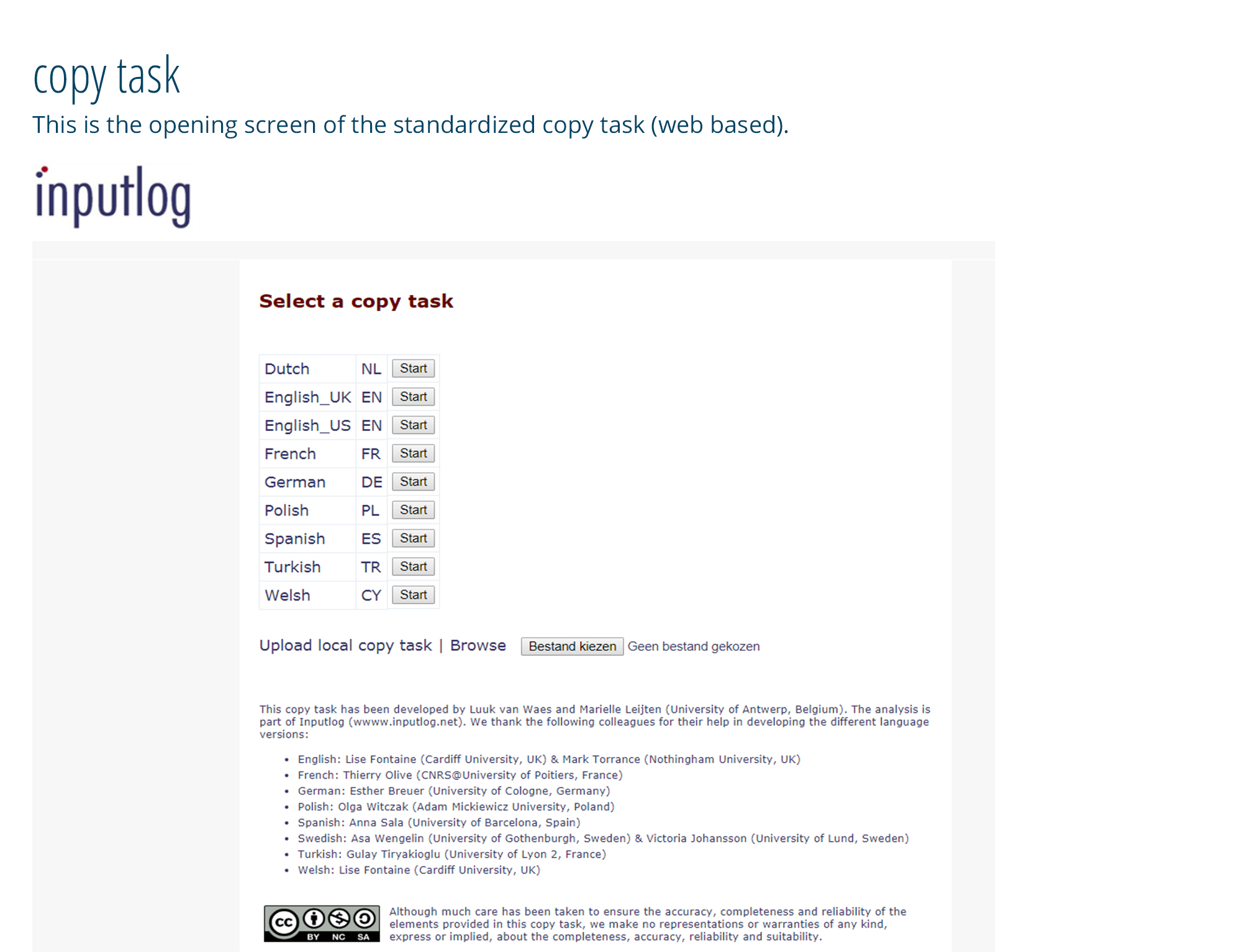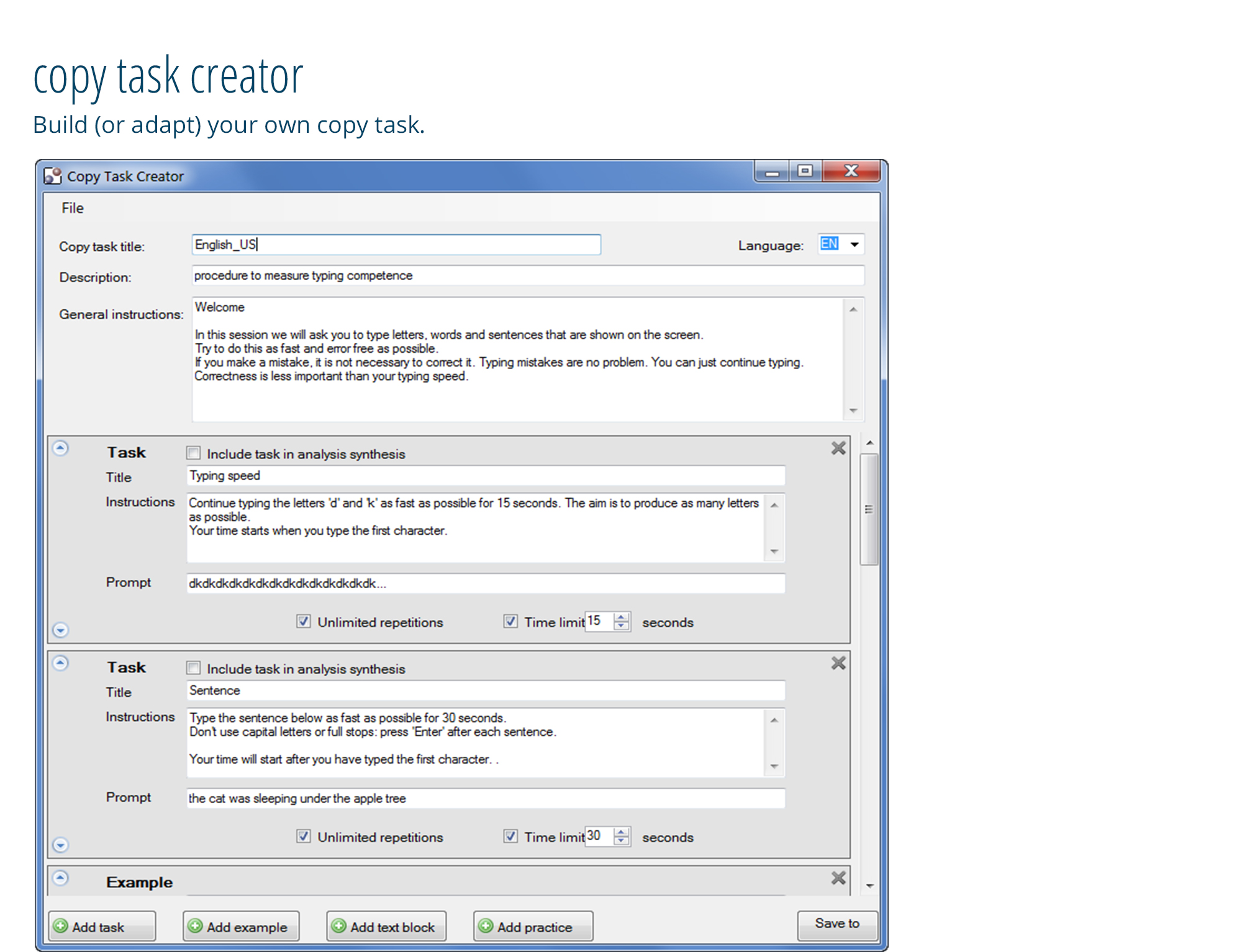About Inputlog
Inputlog is a logging tool that logs all types of input modes: keyboard, mouse & speech recognition. Researchers make frequent use of keystroke logging tools to describe online writing or translation processes in detail. The Inputlog community counts more than a thousand researchers worldwide, and new research studies are reported every month (see Publications). The program enables researchers to precisely register and accurately reconstruct the writing processes of writers who compose texts at the computer.
Watch & meet Inputlog
record
source analysis
fluency
Five modules

Record This module logs (keyboard, mouse, and speech) data in Microsoft Word and other Windows-based programs together with a time stamp (ms). Moreover, in MS Word this module also logs character position, actual document length, and copy/paste/move actions. All online documents consulted or programs accessed are stored in a so called ‘focus’ event.
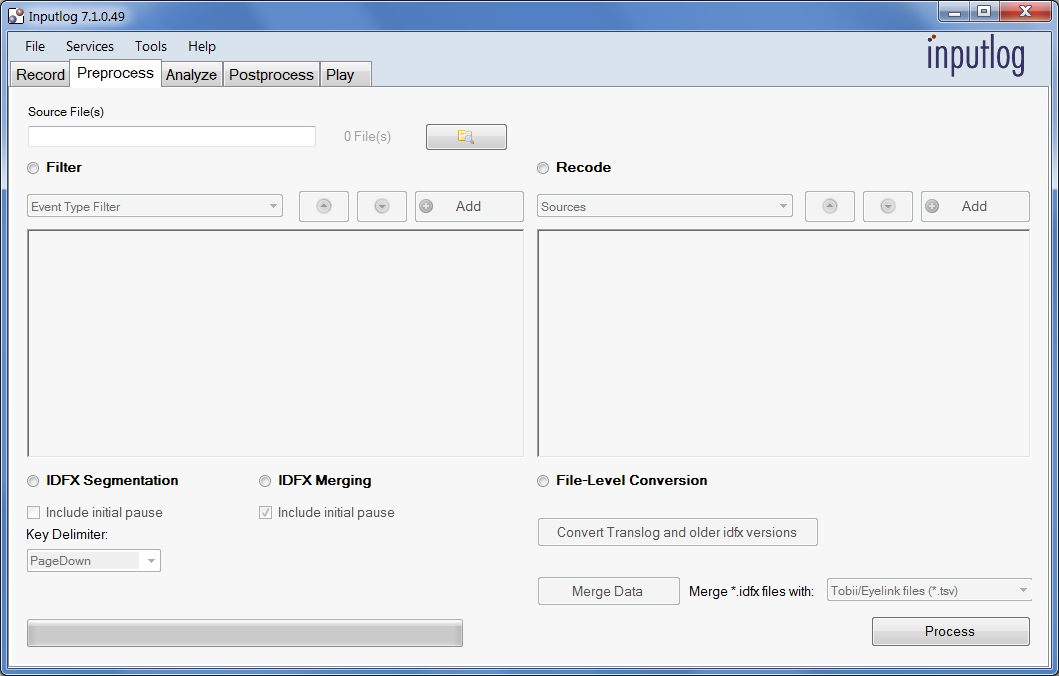
Preprocess As it is often necessary to refine logged data prior to analysis, this module allows you to process data from various perspectives: event based (keyboard, mouse, and speech), time based, or based on window changes (sources: MS Word, Internet, etc.). This module also allows you to integrate single or multiple log files from Inputlog or other observation tools (Morae, Dragon Naturally Speaking, Tobii eyetracking data).

Analyze This module is the heart of the program and features three process representations (general and linear logging file and the s-notation of the text) and five aggregated levels of analysis (summary, pause, revision, and source analyses). In addition, a process and fluency graph can be produced. For English and Dutch a linguistic process analysis is available.
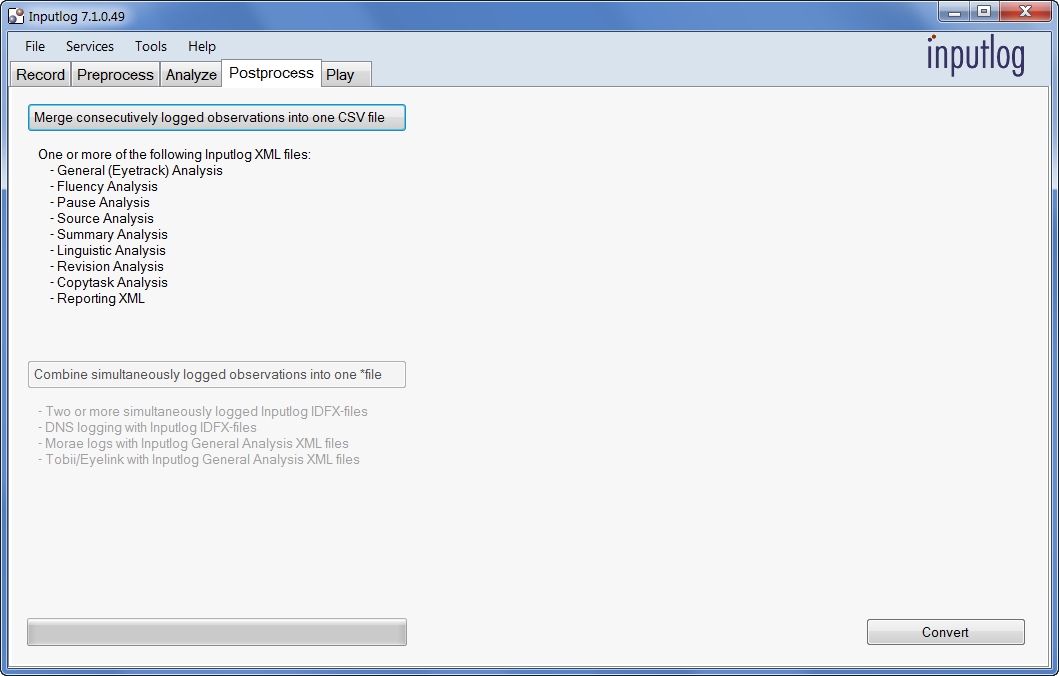
Postprocess It is also possible to conveniently and accurately merge multiple analysis files from large scale data collections. These merged files can easily be exported to Excel, or to R or SPSS for further analysis.

Play This module allows researchers to play back the recorded session at various levels (time or revision based). The replay is data based (not video based), and the play speed is adjustable. A logged session can also be reconstructed revision by revision. Warning | As we know that the replay module is very error sensitive, we advise you to use an additional screencam like Ezvid, Camstudio or Camtasia, if your research relies on the replay function (e.g. prompted recall).
Some screenshots
Available analyses
general analysis Basic log file analysis with the action content, the character position, the time stamp, the action time and the pausing time for every input event (letter, mouse click, voice input, program switch). For mouse operations the xy-value of the screen position is defined.
summary Analysis that consists of five main sections
- process information (e.g., number of words produced);
- product information (e.g., number of words in the final product);
- product/process information (e.g., ratio);
- process time;
- writing mode.
S-notation The S-notation describes writing as a decomposed linear process. A complete record of the writer’s revisions is shown in a text representation. Insertions, deletions and breaks are numbered according to the order of their occurrence in the writing process.
linear analysis Analysis in which the evolving text is represented step by step, in chronoligical order (including pauses between events that exceed the given threshold).
bigram Analysis that complements the overall pause analysis by providing more detailed information on a lower level, viz. the bigram level. In the analysis we mainly focus on bigrams that represent a combination of two (undercast) letters, e.g., ‘ab’ or ‘th’.
pause Analysis that describes the pausing behavior from different perspectives:
- number and duration;
- location (e.g., within and between words);
- P-bursts;
- variation per interval or period.
process graph Graph representing the text production, text movements, product status and source interaction at every moment during the evolving composing process.
fluency and graph Graph representing the text production, text movements, product status and source interaction at every moment during the evolving composing process.
source and graph Analysis and network graph presneting the source use and source interaction.
revision Analysis in which all document changes (insertions and deletions) are identified and summarized.
word pause Analysis that allows the researcher to seelctively retrieve pauses at word level, based on a list of predefined words.
token Analysis providing the orthographical process of specific words based on a predefined list of words. .
linguistic analysis Analysis providing a linguistic process analysis (e.g., part of speech analysis and related pausing behavior). Only for Dutch and English.
copy task analysis Analysis that provides a series of measures about the participants’ typing skills based on the (default) copy task. Available in ten languages.
report function [upon request] This (extra) function creates a personalized process report combining variables from different analyses and graphs. Designed to provide process feedback in educational settings.
Reference
If you publish or present a paper in which Inputlog has been used, please refer to the following article:
Leijten, M., & Van Waes, L. (2013). Keystroke Logging in Writing Research: Using Inputlog to Analyze Writing Processes. Written Communication 30(3), 358-392
DOI: 10.1177/0741088313491692
PDF
